17 june 2019
|
|
Jürgen Todenhöfer, German author and journalist, was in Gaza on June 14, participating in the weekly ‘Great March of Return’ demonstration, in solidarity with Palestinians, Days of Palestine reported.
Todenhöfer was videotaped holding a sign with the words, “Dear Israelis, please treat the Palestinians the same way you want to be treated!” In a show of outright disregard for human rights, an Israeli sniper shot this peaceful foreign activist with a rubber-coated steel bullet in his back. Todenhöfer wrote on his Facebook page afterward, stating “Dear friends, one cannot ‘demonstrate’ more peacefully than I tried to do today at the border fence of Gaza.” Readers are encouraged to watch the video of this peaceful protester, here. |
He then said “There is no other constitutional state in the world where you are shot at for such a conciliatory sentence. It can’t go on like this.”
Not only does he report being a few hundred meters from the border, but that the Israeli soldier shot him in the back with a rubber bullet. The question is, what type of threat was this older gentleman, a few hundred meters away from the fence, with his hands up, facing away from the soldiers?
On March 16, 2003, Rachel Corrie, an American activist, and member of pro-Palestinian International Solidarity Movement (ISM), was killed by Caterpillar D9R armored bulldozer.
Corrie was involved in an effort to stop the demolition of homes in southern Gaza, with other international activists.
Since March of 2018, Palestinians in Gaza have been demanding Israel lift the illegal blockade it has imposed on the highly densely populated strip, and for the right of Palestinian refugees and their descendants to return to their ancestral lands, occupied and colonized by Israel.
Not only does he report being a few hundred meters from the border, but that the Israeli soldier shot him in the back with a rubber bullet. The question is, what type of threat was this older gentleman, a few hundred meters away from the fence, with his hands up, facing away from the soldiers?
On March 16, 2003, Rachel Corrie, an American activist, and member of pro-Palestinian International Solidarity Movement (ISM), was killed by Caterpillar D9R armored bulldozer.
Corrie was involved in an effort to stop the demolition of homes in southern Gaza, with other international activists.
Since March of 2018, Palestinians in Gaza have been demanding Israel lift the illegal blockade it has imposed on the highly densely populated strip, and for the right of Palestinian refugees and their descendants to return to their ancestral lands, occupied and colonized by Israel.
16 june 2019

Israeli soldiers fired, on Sunday, dozens of high-velocity gas bombs at many homes, east of Rafah, in the southern part of the Gaza Strip, causing many Palestinians to suffer the effects of inhalation.
Media sources said the soldiers, stationed across the perimeter fence, fired the gas bombs at homes located in the Nahda area, in Rafah.
Most of the wounded Palestinians received treatment by medics, while five of them, including children, were rushed to Abu Yousef Najjar hospital.
Media sources said the soldiers, stationed across the perimeter fence, fired the gas bombs at homes located in the Nahda area, in Rafah.
Most of the wounded Palestinians received treatment by medics, while five of them, including children, were rushed to Abu Yousef Najjar hospital.
14 june 2019
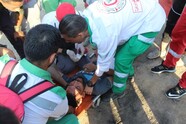
The Palestinian Center For Human Rights (PCHR): On Friday, 14 June 2019, in excessive use of force against peaceful protesters on the 61st Friday of the Great March of Return and Breaking the Siege, Israeli forces wounded 92 Palestinian civilians, 28 of them were children and four were paramedics, including a female paramedic, in the eastern Gaza Strip. One of the wounded was a child, who was hit with a live bullet to the chest and sustained serious wound.
According to observations by PCHR’s fieldworkers, the Israeli forces who stationed in prone positions and in military jeeps along the fence with Israel continued to use excessive force against the protesters by firing bullets and tear gas canisters at them. As a result, dozens of the protesters were hit with bullets and teargas canisters without posing any imminent threat or danger to the life of soldiers.
During this week, Israeli forces have escalated their attacks against the medical personnel in the field, wounding 4 members of them with rubber bullets and direct tear gas canisters in eastern Rafah. This indicates that there is an Israeli systematic policy to target the medical personnel and obstruct their humanitarian work that is guaranteed under the rules of the international humanitarian law.
On Friday, 14 June 2019, the incidents were as follows:
At approximately 16:30, thousands of civilians, including women, children and entire families, started swarming to the five encampments established by the Supreme National Authority of Great March of Return and Breaking the Siege adjacent to the border fence with Israel in eastern Gaza Strip cities.
Hundreds of protesters, including children and women, gathered adjacent to the border fence with Israel in front of each encampment and its vicinity tens and hundreds of meters away from the fence. The protesters chanted slogans, raised flags, and in very limited incidents attempted to approach the border fence and throw stones at the Israeli forces.
Although the protesters gathered in areas open to the Israeli snipers stationed on the top of the sand berms and military watchtowers and inside and behind the military jeeps, the Israeli forces fired live and rubber bullets in addition to a barrage of tear gas canisters. The Israeli attacks, which continued at around 19:30, resulted in the injury of 92 Palestinian civilians, 28 of them were children and four were paramedics, including a female paramedic.
sAmong those wounded, 25 were hit with live bullets and shrapnel, 52 were hit with rubber bullets and 15 were directly hit with tear gas canisters. One of the wounded was a child, who was hit with a live bullet to the chest and sustained serious wound.
In addition, dozens of civilians suffered tear gas inhalation and seizures due to tear gas canisters that were fired by the Israeli forces from the military jeeps and riffles in the eastern Gaza Strip.
table shows the number of civilian casualties due to the Israeli forces’ suppression of the Great March of Return since its beginning on 30 March:
Killed Wounded
Total 207 12707
Children 44 2532
Women 2 385
Journalists 2 203
Medical personnel 4 209
Persons with disabilities 9 Undefined
Note: Among those wounded, 548 are in serious condition and 137 had their lower or upper limbs amputated; 123 lower-limb amputations, 14 upper-limb amputations, and 25 children had their limbs amputated according to the Ministry of Health. The number of those wounded only include those wounded with live bullets and directly hit with tear gas canisters, as there have been thousand others who suffered tear gas inhalation and sustained bruises.PCHR reiterates Palestinians’ right to peaceful assembly to confront Israel and its forces’ denial of the legitimate and inalienable rights of the Palestinian people, including the right to self-determination, right to return and right to end the occupation of the Palestinian territory.
PCHR stresses that the Israeli forces should stop using excessive force and respond to the legitimate demands of the demonstrators, particularly lifting the closure which is the real solution to end the humanitarian crisis in the Gaza Strip.
PCHR reiterates the reported published in February by the UN Commission of Inquiry which emphasizes what came by PCHR and other Palestinian and international human rights organizations. The report at the time concluded that the Israeli violations may amount to war crimes and crimes against humanity.
PCHR emphasizes that continuously targeting civilians, who exercise their right to peaceful assembly or while carrying out their humanitarian duty, is a serious violation of the rules of international law, international humanitarian law, the ICC Rome Statute and Fourth Geneva Convention.
Thus, PCHR reiterates its call upon the ICC Prosecutor to open an official investigation in these crimes and to prosecute and hold accountable all those applying or involved in issuing orders within the Israeli Forces at the security and political echelons.
PCHR also emphasizes that the High Contracting Parties to the 1949 Fourth Geneva Convention should fulfill their obligation under Article 1; i.e., to respect and ensure respect for the Convention in all circumstances and their obligations under Article 146 to prosecute persons alleged to commit grave breaches of the Fourth Geneva Convention.
PCHR calls upon Switzerland, in its capacity as the Depository State for the Convention, to demand the High Contracting Parties to convene a meeting and ensure Israel’s respect for this Convention, noting that these grave breaches constitute war crimes under Article 147 of the same Convention and Protocol (I) Additional to the Geneva Conventions regarding the guarantee of Palestinian civilians’ right to protection in the occupied territories.
According to observations by PCHR’s fieldworkers, the Israeli forces who stationed in prone positions and in military jeeps along the fence with Israel continued to use excessive force against the protesters by firing bullets and tear gas canisters at them. As a result, dozens of the protesters were hit with bullets and teargas canisters without posing any imminent threat or danger to the life of soldiers.
During this week, Israeli forces have escalated their attacks against the medical personnel in the field, wounding 4 members of them with rubber bullets and direct tear gas canisters in eastern Rafah. This indicates that there is an Israeli systematic policy to target the medical personnel and obstruct their humanitarian work that is guaranteed under the rules of the international humanitarian law.
On Friday, 14 June 2019, the incidents were as follows:
At approximately 16:30, thousands of civilians, including women, children and entire families, started swarming to the five encampments established by the Supreme National Authority of Great March of Return and Breaking the Siege adjacent to the border fence with Israel in eastern Gaza Strip cities.
Hundreds of protesters, including children and women, gathered adjacent to the border fence with Israel in front of each encampment and its vicinity tens and hundreds of meters away from the fence. The protesters chanted slogans, raised flags, and in very limited incidents attempted to approach the border fence and throw stones at the Israeli forces.
Although the protesters gathered in areas open to the Israeli snipers stationed on the top of the sand berms and military watchtowers and inside and behind the military jeeps, the Israeli forces fired live and rubber bullets in addition to a barrage of tear gas canisters. The Israeli attacks, which continued at around 19:30, resulted in the injury of 92 Palestinian civilians, 28 of them were children and four were paramedics, including a female paramedic.
sAmong those wounded, 25 were hit with live bullets and shrapnel, 52 were hit with rubber bullets and 15 were directly hit with tear gas canisters. One of the wounded was a child, who was hit with a live bullet to the chest and sustained serious wound.
In addition, dozens of civilians suffered tear gas inhalation and seizures due to tear gas canisters that were fired by the Israeli forces from the military jeeps and riffles in the eastern Gaza Strip.
table shows the number of civilian casualties due to the Israeli forces’ suppression of the Great March of Return since its beginning on 30 March:
Killed Wounded
Total 207 12707
Children 44 2532
Women 2 385
Journalists 2 203
Medical personnel 4 209
Persons with disabilities 9 Undefined
Note: Among those wounded, 548 are in serious condition and 137 had their lower or upper limbs amputated; 123 lower-limb amputations, 14 upper-limb amputations, and 25 children had their limbs amputated according to the Ministry of Health. The number of those wounded only include those wounded with live bullets and directly hit with tear gas canisters, as there have been thousand others who suffered tear gas inhalation and sustained bruises.PCHR reiterates Palestinians’ right to peaceful assembly to confront Israel and its forces’ denial of the legitimate and inalienable rights of the Palestinian people, including the right to self-determination, right to return and right to end the occupation of the Palestinian territory.
PCHR stresses that the Israeli forces should stop using excessive force and respond to the legitimate demands of the demonstrators, particularly lifting the closure which is the real solution to end the humanitarian crisis in the Gaza Strip.
PCHR reiterates the reported published in February by the UN Commission of Inquiry which emphasizes what came by PCHR and other Palestinian and international human rights organizations. The report at the time concluded that the Israeli violations may amount to war crimes and crimes against humanity.
PCHR emphasizes that continuously targeting civilians, who exercise their right to peaceful assembly or while carrying out their humanitarian duty, is a serious violation of the rules of international law, international humanitarian law, the ICC Rome Statute and Fourth Geneva Convention.
Thus, PCHR reiterates its call upon the ICC Prosecutor to open an official investigation in these crimes and to prosecute and hold accountable all those applying or involved in issuing orders within the Israeli Forces at the security and political echelons.
PCHR also emphasizes that the High Contracting Parties to the 1949 Fourth Geneva Convention should fulfill their obligation under Article 1; i.e., to respect and ensure respect for the Convention in all circumstances and their obligations under Article 146 to prosecute persons alleged to commit grave breaches of the Fourth Geneva Convention.
PCHR calls upon Switzerland, in its capacity as the Depository State for the Convention, to demand the High Contracting Parties to convene a meeting and ensure Israel’s respect for this Convention, noting that these grave breaches constitute war crimes under Article 147 of the same Convention and Protocol (I) Additional to the Geneva Conventions regarding the guarantee of Palestinian civilians’ right to protection in the occupied territories.
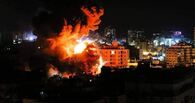
Israeli warplanes at dawn Friday bombed two sites in the besieged Gaza Strip, with no reported casualties.
A reporter for the Palestinian Information Center (PIC) said that a warplane fired at least three missiles at a resistance post in the east of al-Zeitoun neighborhood, southeast of Gaza City.
Another barrage of air-to-surface missiles targeted the new Gaza seaport in the south.
Explosions heard during the airstrikes, amid intensive overflights.
The Israeli occupation army claimed its aerial attacks came after a rocket fired from Gaza hit a building in Sderot settlement, north of Gaza.
A reporter for the Palestinian Information Center (PIC) said that a warplane fired at least three missiles at a resistance post in the east of al-Zeitoun neighborhood, southeast of Gaza City.
Another barrage of air-to-surface missiles targeted the new Gaza seaport in the south.
Explosions heard during the airstrikes, amid intensive overflights.
The Israeli occupation army claimed its aerial attacks came after a rocket fired from Gaza hit a building in Sderot settlement, north of Gaza.
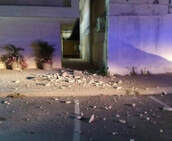
On Thursday, Israeli sources have reported that a rocket, reportedly fired from the Gaza Strip, struck a building in the Israeli Negev town of Sderot, causing damage.
Israeli daily Haaretz said the building which was struck by the rocket is part of a religious school, and that the building sustained structural damage; no injuries were reported.
It also stated that the rocket sirens were sounded in Sderot and Sha’ar HaNegev settlements, close to the border with Gaza.
Earlier Thursday, the Israeli army fired missiles at a tunnel on the Gaza border, and damaged it, and said the strike came “in retaliation to shells fired from Gaza” on Wednesday at night.
On Thursday at dawn, the army fired several missiles into Palestinian lands in Gaza city, and Rafah in the southern part of the coastal region, causing damage to nearby homes and buildings.
It is worth mentioning that, on Wednesday, the army imposed a strict maritime siege on the coastal region until further notice, for what it called “the ongoing flying of incendiary balloons from Gaza into Israel.”
Israeli daily Haaretz said the building which was struck by the rocket is part of a religious school, and that the building sustained structural damage; no injuries were reported.
It also stated that the rocket sirens were sounded in Sderot and Sha’ar HaNegev settlements, close to the border with Gaza.
Earlier Thursday, the Israeli army fired missiles at a tunnel on the Gaza border, and damaged it, and said the strike came “in retaliation to shells fired from Gaza” on Wednesday at night.
On Thursday at dawn, the army fired several missiles into Palestinian lands in Gaza city, and Rafah in the southern part of the coastal region, causing damage to nearby homes and buildings.
It is worth mentioning that, on Wednesday, the army imposed a strict maritime siege on the coastal region until further notice, for what it called “the ongoing flying of incendiary balloons from Gaza into Israel.”
13 june 2019
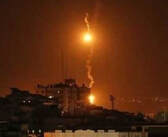
Israeli soldiers fired, on Thursday at dawn, several missiles into Palestinian lands in Gaza city, and Rafah in the southern part of the coastal region, causing damage to nearby homes and buildings.
Media sources said the Israeli missiles did not lead to casualties, but caused damage to some homes and structures near the targeted areas.
They added that the soldiers also fired two artillery shells into farmlands, east of Khan Rafah, causing damage,
Israel also ordered Gaza coastal waters shut until further notice, preventing the residents, including the fishermen, from entering Palestinian waters, “in response to flammable balloons and kites flown from Gaza into nearby Israeli area.”
The Israeli army said a shell was fired from Gaza, during late night hours Wednesday, before the Iron Dome missile interception system managed to detonate it.
Media sources said the Israeli missiles did not lead to casualties, but caused damage to some homes and structures near the targeted areas.
They added that the soldiers also fired two artillery shells into farmlands, east of Khan Rafah, causing damage,
Israel also ordered Gaza coastal waters shut until further notice, preventing the residents, including the fishermen, from entering Palestinian waters, “in response to flammable balloons and kites flown from Gaza into nearby Israeli area.”
The Israeli army said a shell was fired from Gaza, during late night hours Wednesday, before the Iron Dome missile interception system managed to detonate it.
12 june 2019
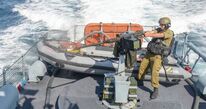
The Israeli occupation navy on Tuesday evening attacked Palestinian fishermen and reduced the permitted fishing range in Gaza waters.
According to the fishermen committees, Israeli gunboats opened machinegun fire at fishermen, forced them to leave their nets and go back to six nautical miles.
On June 4, the Israeli army announced the expansion of the fishing zone to 15 nautical miles after reducing it to 10 miles.
Since last May, the army had expanded the offshore fishing limit imposed on Gaza six times before shrinking it each time under different pretexts.
A report released by the fishermen committees said the Israeli naval forces opened fire 32 times last May at Palestinian fishermen and their boats off the coast of Gaza, leading to the injury of two fishermen.
The Israeli navy also arrested five fishermen, caused others to lose their nets and confiscated several boats during the same month.
According to the fishermen committees, Israeli gunboats opened machinegun fire at fishermen, forced them to leave their nets and go back to six nautical miles.
On June 4, the Israeli army announced the expansion of the fishing zone to 15 nautical miles after reducing it to 10 miles.
Since last May, the army had expanded the offshore fishing limit imposed on Gaza six times before shrinking it each time under different pretexts.
A report released by the fishermen committees said the Israeli naval forces opened fire 32 times last May at Palestinian fishermen and their boats off the coast of Gaza, leading to the injury of two fishermen.
The Israeli navy also arrested five fishermen, caused others to lose their nets and confiscated several boats during the same month.
10 june 2019
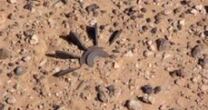
Two Palestinians were injured on Monday after a device left over by the Israeli occupation forces exploded in the eastern area of Gaza city.
Police spokesperson Ayman al-Batniji said in a brief statement that two Palestinians were injured in an explosion in Shejaiya neighborhood caused by an Israeli army remnant.
Al-Batniji explained that the explosion took place as the authorities were removing the rubble of a Palestinian home that was bombed in the latest Israeli military assault on the Gaza Strip.
Police spokesperson Ayman al-Batniji said in a brief statement that two Palestinians were injured in an explosion in Shejaiya neighborhood caused by an Israeli army remnant.
Al-Batniji explained that the explosion took place as the authorities were removing the rubble of a Palestinian home that was bombed in the latest Israeli military assault on the Gaza Strip.

Mohammad Sobhi al-Jodeili, 36
The Palestinian Red Crescent Society (PRCS) has confirmed that a medic, identified as Mohammad Sobhi al-Jodeili, 36, died from serious wounds he suffered, on May 3, 2019, after Israeli soldiers shot him with a rubber-coated steel bullet in the face in the Gaza Strip. video
The PRCS stated that the medic, from the al-Boreij refugee camp in central Gaza, suffered fractures in his nose, face and skull.
The soldiers shot him in Abu Safiyya area, in Jabalia, in the northern part of the coastal region, while he was providing medical care to wounded Palestinians during the Great Return March processions.
He received treatment at one of the make-shift hospitals before he was moved to a medical center in Gaza, and later was moved to the al-Ahli hospital in Hebron, in the southern part of the West Bank, due to the seriousness of his wounds.
The Palestinian Red Crescent Society (PRCS) has confirmed that a medic, identified as Mohammad Sobhi al-Jodeili, 36, died from serious wounds he suffered, on May 3, 2019, after Israeli soldiers shot him with a rubber-coated steel bullet in the face in the Gaza Strip. video
The PRCS stated that the medic, from the al-Boreij refugee camp in central Gaza, suffered fractures in his nose, face and skull.
The soldiers shot him in Abu Safiyya area, in Jabalia, in the northern part of the coastal region, while he was providing medical care to wounded Palestinians during the Great Return March processions.
He received treatment at one of the make-shift hospitals before he was moved to a medical center in Gaza, and later was moved to the al-Ahli hospital in Hebron, in the southern part of the West Bank, due to the seriousness of his wounds.
Page: 26 - 25 - 24 - 23 - 22 - 21 - 20 - 19 - 18 - 17 - 16 - 15 - 14 - 13 - 12 - 11 - 10 - 9 - 8 - 7 - 6 - 5
Truce violations List of names Pictures of martyrs
Days: Aug: 26 - 25 - 24 - 23 - 22 - 21 - 20 - 19 - 18 - 17 - 16 - 15 - 14 - 13 - 12 - 11 - 10 - 9 - 8 - 7 - 6 - 5 - 4 - 3 - 2 - 1
July: 31 - 30 - 29 - 28 - 27 - 26 - 25 - 24 - 23 - 22 - 21 - 20 - 19 - 18 - 17 - 16 - 15 - 14 - 13 - 12 - 11 - 10 - 9 - 8
